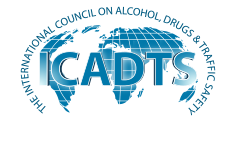- Home
- News
News
Drug and Alcohol Prevalence in Seriously and Fatally Injured Road Users Before and During the COVID-19 Public Health Emergency in the United States
A gap in knowledge exists regarding drug use among drivers and other road users (pedestrians, bicyclists) who are seriously or fatally injured in crashes in the United States. This study examines the prevalence of alcohol as well as selected over-the-counter, prescription, and illegal drugs in the blood of seriously or fatally injured drivers and other crash victims near the time of their crashes before and during the COVID-19 public health emergency (pandemic). Data were collected at Level 1 trauma centers and medical examiner offices. The 3,003 participants represent a convenience sample of roadway users who were seriously or fatally injured during the study period. Trauma centers and medical examiners made available small volumes of blood for toxicological analyses from the total collected during their normal clinical procedures. The results indicate drug prevalence was high among seriously and fatally injured roadway users before the public health emergency began and was even higher during, especially for alcohol, cannabinoids (active THC), and opioids. Drivers in particular showed significantly higher overall drug prevalence during the public health emergency, with 64.7% testing positive for at least one active drug, compared to 50.8% before. Drivers also showed an increase in testing positive for two or more categories of drugs going from 17.6% before to 25.3% during the public health emergency. Of particular note, active THC was more prevalent among drivers during the public health emergency than alcohol (32.7% versus 28.3%), and opioid use among drivers almost doubled from 7.5% to 13.9%. Overall, the results of this study suggest the highway safety community should be concerned about the impact of other drugs as well as alcohol. In particular, the observed cannabis and opioid prevalence rates before and during the public health emergency could be indicative of a growing problem. These findings are prevalence rates only and cannot be used to determine whether the people were impaired at the time of their crash.
REFERENCE:
Thomas, F. D., Berning, A., Darrah, J., Graham, L., Blomberg, R., Griggs, C., Crandall, M., Schulman, C., Kozar, R., Neavyn, M., Cunningham, K., Ehsani, J., Fell, J., Whitehill, J., Babu, K., Lai, J., and Rayner, M. (2020, October). Drug and alcohol prevalence in seriously and fatally injured road users before and during the COVID-19 public health emergency (Report No. DOT HS 813 018). National Highway Traffic Safety Administration.
Click this link to view the full file: https://rosap.ntl.bts.gov/view/dot/50941/dot_50941_DS1.pdf
